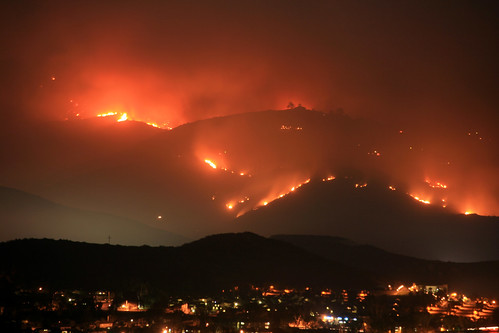Crisis communication has two different, distinct meanings. They require different approaches, different ideas, and completely different types of plans. And not knowing the differences between the two can create some problems if you try to use one approach in the wrong place.

There’s corporate crisis communication (CCC), and there’s CERC.
CERC — Crisis and Emergency Risk Communication — is what the government calls communication during a massive emergency, such as swine flu, a terrorist attack, or large-scale natural disaster. (And you can tell the government came up with it, since it’s so much longer and has more words than are truly necessary.)
Both are often called “oh shit PR,” but the difference is that in a CERC situation, a lot of people could die. With CCC, a lot of money could be lost. One type of emergency gives emergency first responders sharp chest pains and indigestion, the other makes the corporate lawyers pull out their hair. But they both say the same two words when something goes down.
Although these two forms have a lot of similarities, there are some important differences. And if you’re talking about social media for crisis communication, you need to know them, because they affect your strategy.
Corporate crisis communication
I’d like to say that it’s important to always tell the truth and to be as open and honest as possible. But the sad truth is that being completely open and honest can ruin a company. I’ve hassled corporate legal departments over their “wrecking” crisis communications, but they’re a necessary part of any response. They just shouldn’t control it. In CCC:
- Transparency tends to go out the window. The emergency is usually something that will make the corporation (or individual) look bad, so the first instinct is to hunker down and contain the bad news. This often means trying to keep it under wraps. This hardly ever works.
- The negative end result of a corporate crisis is a loss of money. It could be a hit to their reputation, credibility, or branding, but those will all effect the bottom line. And since that can be in the millions or billions, crisis communication is not something that should be taken lightly. Entire companies, like Chi-Chi’s restaurants, have been lost to bad communications. But it’s the attempt to avoid losing money that leads to bad communications.
- Communication is about containment. Many corporate crisis PR professionals are focused on keeping their client from being found guilty or negligent. They’re not worried about whether people like them, they just want to win the pending lawsuits. So they’ll put out information that, while is not a lie,
- The message is the biggest part of the response. There’s other stuff going on behind the scenes — product recall, legal preparations, brand managment — but the communication is what’s going to affect the public’s perception, and thus, their reaction, lawsuits, vendor relationships, etc. Information may be easy to get if you’re in crisis communication, but it’s not always easy to share.
Social media strategy: Guarded, but present. Correct misinformation, use Tweets and Facebook to communicate with customers in a brand management manner. Put on your best face, but don’t lie. Monitor the gossip sites, but don’t engage.
Crisis and Emergency Risk Communication
This is the area I came from. We wanted as much open communication as we could get. More was better, and there was no such thing as too honest. Our goal was to “prevent panic,” and make sure everyone knew what was going on. With CERC:
- Transparency is crucial. This is information people need to know. Information about where to go for safety, supplies, or medication.
- The negative end result of a public crisis is a loss of life. When I was at the Indiana State Department of Health, we trained for things like medication distribution during an anthrax attack. The goal was to tell as many people as possible where medication was available. Information has to be gotten out quickly and to as many people as possible.
- Communication is widespread. The point of CERC is to get as much information out as possible, and to correct misinformation. There is nothing that should be contained or covered up.
- The message supports the rest of the response. It’s the other stuff that’s going on — law enforcement, public health response, rescue/recovery, clean-up — that’s going to affect the public, and communication lets the public know what’s going on. If there’s medicine to be distributed, communication will tell the public where to get it, but it’s the Point of Distribution that will give it out. The problem with this approach is that the public information officers (PIOs) are trying to get information from the busiest people, which means it’s not always readily available or being put out as quickly as possible. This is one reason the PIOs have direct access to the Incident Commander, the person in charge.
Social media strategy: Strong social media strategy. More people are getting their news on Twitter and Facebook than they are in their regular media. Put information out on social media at the same time you give it to the mainstream media. Correct misinformation directly, rather than through mainstream media. Monitor the citizen journalists, and engage when it’s appropriate.
Photo: Slworking2